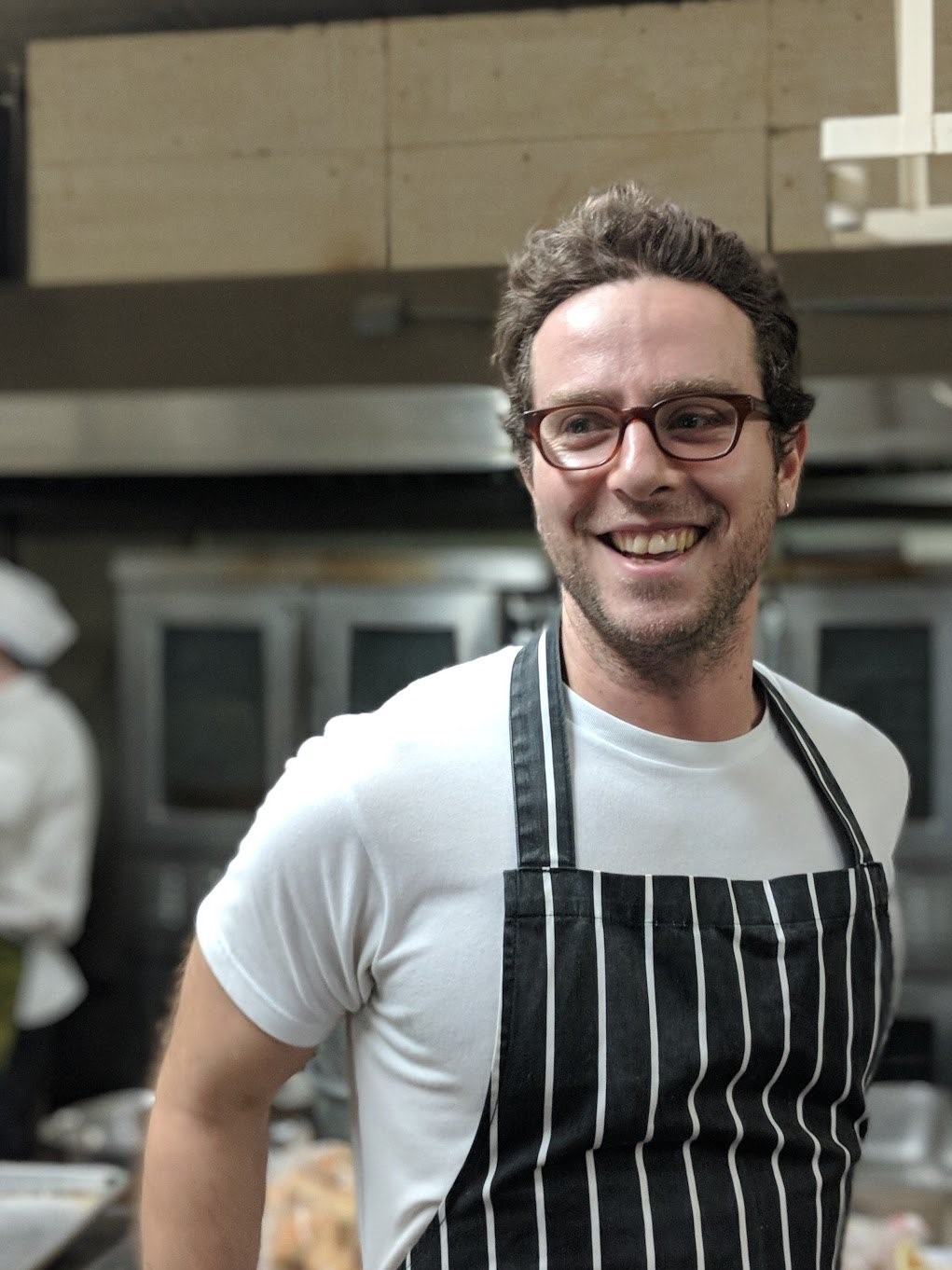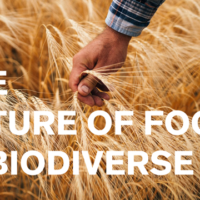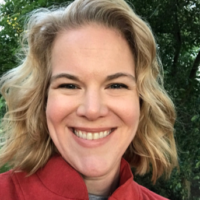
From January 7 – February 8, Food+Tech Connect and The Future Market are hosting Biodiversity: The Intersection of Taste & Sustainability, an editorial series featuring interviews with over 45 leading food industry CEOs, executives, farmers, investors and researchers on the role of biodiversity in the food industry. See the full list of participants and read about why biodiversity in food is important here.
Spices and where they come from are one of the most overlooked parts of cooking. Burlap & Barrel is trying to change that. The startup sources unique, flavorful spices from artisan farms around the globe that have never before been available in the US.
After visiting over 100 spice farms, the company has found that the most interesting and tastiest crops are grown in biodiverse environments, but often have smaller yields. To overcome this challenge, Burlap is rethinking the traditional spice supply chain. Below, co-founder Ethan Frisch talks to me about how the company is developing a supply chain that is able to scale horizontally, so it can work with a wide variety of producers of different sizes in a multitude of countries.
________________________
Danielle Gould: Is biodiversity a priority for Burlap & Barrel? If so, how and why?
Ethan Frisch: Burlap & Barrel was founded on the inherent connection between good agricultural practices by expert farmers, and unique, beautiful spice crops. Biodiverse and biodynamic conditions aren’t simply a secondary benefit of our work – they’re the reason that our partner farmers grow great spices. Our cardamom is grown under the canopy of Guatemala’s cloud forests; our cinnamon, cloves and black peppercorns grow wild on the islands of Pemba and Zanzibar; and our turmeric is intercropped with sugarcane because our partner farmer in India has seen improved quality of both crops when he grows them together.
DG: How does Burlap & Barrel define and think about biodiversity? What does an ideal biodiverse food system look like? How do you measure biodiversity, and when will we know when we’ve arrived at a “good” level of biodiversity?
EF: High quality spices are always the result of a skilled farmer and specific growing conditions. In the past three years, I’ve visited over 100 spice farms, and the farms with the most interesting crops are always growing them in biodiverse environments. My approach to measuring biodiversity has been pretty unscientific. I look for farms where multiple crops are growing together, and I ask farmers a thousand questions about why and how they’ve decided to cultivate their crops in certain ways. I’m looking for systems that are regenerative, where inputs outweigh outputs and the crops express that environmental health in their flavor, color, size and shape.
DG: What is Burlap & Barrel doing or planning to do to promote biodiversity?
EF: Spice farmers growing biodynamically are faced with a difficult business proposition; they often have smaller yields, but the quality of the spices they grow is much higher. The commodity spice trade leaves farmers with very few options, and unfortunately rewards quantity over quality. By setting our partner farmers up to export their own crops directly, we’re creating an opportunity for a different business model, one that emphasizes quality and rewards a farmer’s skill and the specific biodiverse growing conditions on the farm. We also work with networks of foragers to source incredible wild spices, because of the uniqueness and intensity of their flavor. Our wild mountain cumin, harvested by shepherds in the high mountains of the Hindu Kush, is being used by some of the world’s best restaurants.
DG: What is the business case for products that promote a more biodiverse food system?
EF: Spices grown in biodiverse environments are better, not only because they’re grown more sustainably but because they taste better. By paying farmers more for higher quality crops, we’re able to build a business that treats farmers as partners rather than as commodity suppliers, and provides home cooks and professional chefs with beautiful spices.
DG: What are the greatest challenges and opportunities your organization faces for creating a more biodiverse system? What are you doing to overcome or capture them?
EF: Everything about setting up new direct supply chains from biodiverse farms around the world is challenging. The logistical systems and the FDA regulations, particularly around the Food Safety Modernization Act, are designed for older styles of sourcing, where products are commodified and supply chains are opaque. As a new kind of spice company, we don’t fit older molds where each company played a single, specific role in the supply chain. Adapting older systems to fit a newer model is challenging, but with the right partners and increased scale, we’re able to do it more easily with every new shipment.
DG: How do you handle the sourcing and scaling of biodiverse ingredients?
EF: When we launched Burlap & Barrel in February 2017, our first shipments were small enough to fit in a suitcase (literally), but these days we import several tons of spices at a time. We’ve found that spices grown biodynamically have more interesting and intense flavors, but the quantities that can be grown are necessarily smaller than would be produced in plantation-style agriculture.
Our partner cooperative in Zanzibar, for example, grows incredible black pepper in a tropical forest – cinnamon and clove trees, cardamom bushes, vanilla vines and black pepper all grow together, along with many other non-edible plants – in a highly biodiverse environment, but because of that environment, they can only grow fairly small quantities, especially of their very intense black pepper. According to conventional wisdom, the Zanzibar archipelago (and specifically the island of Pemba, where ours is grown) is not ideal for black pepper – the soil is too sandy, the landscape is too hilly and the is too weather too hot and dry for most of the year. The harsh environment actually makes for a very special black pepper fruit, with heady citrus aroma and lingering heat, but one that’s only available in tiny quantities. We bought our partner cooperative’s entire black pepper harvest last year, which only amounted to about 1100 lbs, not nearly enough to keep our enthusiastic customers happy.
Our solution lies in a supply chain that’s scaleable horizontally rather than vertically. Instead of depending on a small number of farmers to grow higher volumes, and invariably reduce the quality of what they grow, we prefer to work with more producers in more countries and highlight the unique characteristics of their spice crops. Embracing biodiversity means appreciating diversity of flavor: spices from different origins, harvested at different points in the season and dried using different techniques are all going to taste different, and we see that as an asset rather than an obstacle. We’re building new supply chains from scratch, rejecting the opaque, commoditized systems that were built on a colonial legacy to prioritize scale over uniqueness, profit over equity and consistency over intensity of flavor.
We work with with a network of logistics partners who are able to facilitate the shipment of our spices directly from our partner farms to our warehouse and then on to our customers. With their help, we’re able to send a truck up into the cloud forests of Guatemala to pick up a load of yellow cardamom, and keep track of dozens of sacks of cinnamon, cloves and black pepper as they fly around the world from Zanzibar to New York (with layovers in Nairobi and Qatar.) We set our partner farmers up to export their crops directly for the first time, which means helping them register with the FDA, making sure their food safety processes meet US standards and managing (and paying for) the logistics to bring their spices to market in the US.
DG: What are some of the most important things retailers, food manufacturers and other key parts of the food supply chain can do to support biodiversity?
EF: Retailers and manufacturers need to talk more about where their products come from. By sharing stories about ingredient sourcing, they’ll be able to convince consumers that biodiverse growing conditions will be better for them, better for farmers and better for the environments in which they’re grown. Our experience has been that our customers, whether they’re home cooks, professional chefs or food manufacturers, appreciate knowing more about where their spices come from and the biodynamic environments in which they were grown. That said, we’re a small company with limited reach, and we’re usually sharing those stories with people who already understand the importance of good growing conditions. We’d like to see larger companies with a broader reach and audiences who might not already be looking for
DG: If we get to a perfectly biodiverse food system, how would that change the typical selection of products we see in a grocery store?
EF: Unfortunately, one of the challenges of biodiverse agriculture is a higher financial cost than most companies and consumers are used to paying. Large food corporations are unwilling to reduce margins, and so higher costs are passed on to consumers. That translates into biodiverse foods being only available to wealthy people, which entrenches segregational systems in our food supply and reduces the scale at which biodiverse foods can be commercially viable. In a more biodiverse food system, we might see a smaller selection of products, but they’ll taste better and be more nutritionally dense. In a perfectly diverse food system, though, we wouldn’t see food costs go up for the consumer – we’d find ways to build savings in the system, or have large corporations accept lower profits.
DG: Are there certain products you would like to see more of in the food industry — either in foodservice or CPG — that would help promote a more biodiverse agricultural system?
EF: In general, we think very little about the supply chains behind our food. Joining a CSA or buying vegetables at a farmer’s market is a great first step, but those aren’t viable options for everyone, either because of geography, climate, cost or personal preference. The emphasis on local sourcing can only take us so far, especially in New York City, and unless consumers are willing to stop drinking coffee and eating avocados, we need to recognize the importance of building better supply chains for foods that can’t be grown locally.
Some crops, and the modern agricultural systems around them, simply don’t lend themselves to biodiverse cultivation. Wheat, corn, cotton and other staples are grown in monocropped systems to produce the volumes required, because of high market demand or because commodity prices are so low that farmers need to grow huge volumes to earn a living. The establishment of new structures is going to be take a very long time, but the process itself will be invaluable in establishing farming and food supply systems that are better for producers and consumers.
DG: What is your vision for what a more biodiverse food system looks like in 10-15 years?
EF: The first steps towards more diverse food systems will to communicate the importance of those new systems to consumers. We’re in the early stages of that process, when better ingredients are still significantly more expensive and only accessible to a certain economic class of home cooks. The case for cooking with better ingredients needs to be made now, so that demand (and production) increase so that prices can decrease. I hope that in the next couple of decades, we’ll know more about where the ingredients we eat come from, and as a result, we’ll appreciate those ingredients more.
__________________
 Ethan Frisch, co-founder of Burlap & Barrel
Ethan Frisch, co-founder of Burlap & Barrel
Ethan Frisch is a native New Yorker, entrepreneur and food systems activist. A former chef in New York and London, he was also the co-founder and Executive Chef of Guerrilla Ice Cream, an activist ice cream cart. As a humanitarian aid worker, he lived and worked in Afghanistan with the Aga Khan Foundation and managed logistics for Doctors Without Borders on the Syrian/Jordanian border.
He is honored to serve on the Board of Directors of the Bond Street Theatre (www.bondst.org), which uses theater to teach conflict resolution in areas of instability, and on the Advisory Boards of the student-led racial literacy organization Princeton CHOOSE and the Fragments Theater, a youth theater company in Palestine. He is also on the Organizing Committee of the Queens International Night Market.





